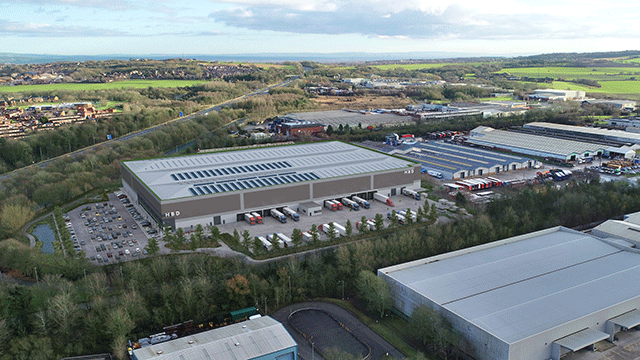Although relocations are likely to increase this year, the bad news for the regions is that few of these moves will be beyond London, as Paul Strohm reports.
“All it will take is one large relocation and the surplus space in this town will be wiped out.” How many times have those words been uttered by agents and local authority economic development officers casting, as they speak, a wistful look in the general direction of London?
This common sentiment is likely to remain, for many, wishful thinking. Despite plenty of opportunities, potential relocators remain thin on the ground.
However, relocations – from the capital at least – are likely to increase this year, according to the latest edition of Jones Lang Wootton’s annual survey, Decentralisation of Offices from Central London. Yet only seven of 21 moves completed or planned between 1995 and 1997 will be beyond London.
“In terms of cost, it is not dramatically different being in the West End, in some cases, or in Maidenhead – leaving aside core West End areas like Mayfair,” says Jon Snow of Knight Frank. “You have to go a long way out of London to get a dramatic reduction.”
The North will command most of those going outside the South East, although its share of almost 10% in the survey is actually made up by only two companies. The South West and East Midlands will each see the arrival of one company.
This year, more than 60% of planned moves are likely to be within the metropolitan area of London – Hammersmith and Docklands top the wish list. And this trend is not isolated. Greater London and the South East were the destinations for almost 75% of the 240 moves from central London between 1983 and 1994.
Only in the later part of the period did cost considerations drive companies to look further afield – the peak was in 1992, when 65% of large relocations went beyond the South East. Since then, depressed London rents have reduced the cost advantage of moving further, particularly when weighed against the cost of losing key staff.
“Many organisations now take a more holistic approach to moving,” says JLW’s Chris Kane. For most, he says, the big worry is the loss of staff and consequent effect on the business. “All the research shows that people will try and relocate within the same region to minimise the disruptive impact on business.”
Small budgets
Given the limited scope of relocation, it is perhaps appropriate that marketing budgets to attract companies on the move are relatively small, in the public sector at least.
A recent report by Ernst & Young and the Institution of Economic Development, Inward Investment Activities of Local Authorities in England, reveals that, while a quarter of county, district and metropolitan authorities spend nothing on investment promotion, most – about 45% – spend up to £49,000. There are few high rollers and only 2% spend over £1m.
Plymouth city council contributes about £65,000 pa to Devon & Cornwall International’s total budget of £1.2m but, as the name suggests, this is spent abroad. Until this year, the city’s own budget has been small – between £10,000 and £15,000 pa. However, according to business and industrial development officer Peter Burrows, the city is moving up a gear and this year has £85,000 to spend on advertising, regional presentations trade shows, and corporate literature.
The Commission for the New Towns apparently has more to spend. With a marketing budget of £4.8m in 1995-1996, of which £1.2m was spent on international marketing, there was left an average of just over £189,000 to promote each of the 19 towns in the UK where the CNT still has commercial property interests.
Regional development authorities such as the Northern Development Co have bigger budgets, but almost all their effort is directed overseas. Of NDC’s £2.9m expenditure in 1995-1996, £4,000 was spent on UK promotion, most of it simply fielding incoming inquiries.
Business reorganisation is behind many of the moves which are taking place, including BT’s Workstyle 2000 project which will see an inner London workforce of 17,000 reduced to 6,000 by March 1999. Such restructuring often means a rationalisation of property holdings, not a rejection of the area. Thus in BT’s case, M25 locations have been one of the main beneficiaries and about 1,500 staff are to be based at Stockley Park.
Areas such as Chatham, north Kent, which has been made more accessible by improved infrastructure such as the Medway Tunnel, are trying to capitalise on the trend for the removal of back office staff from London. Colonial Mutual, Woolwich, Halifax and Lloyds of London have so far moved there.
But some companies choose to move further to help in implementing a change of image or culture. Having rationalised its liner department, Inchcape Shipping Services moved to 929m2 (10,000 sq ft) at SG Warburg’s Southgate Park on Bakewell Road, Peterborough, in April. The company wanted to centralise backroom operations formerly in London, Felixstowe, Liverpool, Birmingham and Grangemouth. According to general manager Adrian Jones, the company also hoped to reduce staff and accommodation costs and to improve internal controls, and was sold on an out-of-London location to get away from the traditional image of a shipping agency.
Inchcape could have saved about 50% of its overheads. “We’ve not necessarily taken all of that saving – there’s an element of getting more for our money,” says Jones, who explains that space standards and working environment were improved.
Skilled staff
Availability of the right staff was important – about half the current workforce were relocated, the rest recruited locally; and by being away from a port location the company could also attract staff with skills not traditionally found in the shipping industry.
London’s out-of-town trend has parallels throughout the UK and, according to JLW, 67% of companies moving between 1995 and 97 intend to occupy suburban or campus schemes. But Kane says that when PPGs 6 and 13 “start to bite” there could be a resurgence of interest in town and city centres.
In Leeds’ case, the pressure to move to the edge of town, compounded by policies which restrict car access to the city, will persist, according to Simon Ives of Chesterton.
Despite access problems, Leeds, which attracted telephone banking company First Direct in 1989, and insurer Direct Line to 8,361m2 (90,000 sq ft) on the Headrow in 1993, is geared up for potential relocations. According to Ives, about 60,385m2 (650,000 sq ft) of offices will be built or are likely to start in the next few months, and only 13,935m2 (150,000 sq ft) is spoken for.
Few organisations are truly footloose, but telephone “call centres” are more so than most, enabling them to exploit the best relocation opportunities.
One estimate puts the number of UK call centres at 2,500, but John Cohen of the Invest in Britain Bureau thinks the number could be much greater. According to Locate in Scotland, there are now about 400 call centres north of the border, employing a total of 10,000. Tyneside has also attracted a number.
However, not all call centres go to provincial locations. In January, Delta Airlines established its European reservations sales centre in 2,044m2 (22,000 sq ft) at Orbit House on Hanger Lane, Park Royal.
The call centre phenomenon illustrates how technology is making locational behaviour harder to forecast: “The tenant is less and less predictable,” says Kane. “Developers and investors have got to do a great deal more market research.”
Thirst for distribution links
Wells Soft Drinks is relocating its entire soft drinks manufacturing business from Tenbury Wells, on the border of Shropshire and Hereford & Worcestershire, to a 19,509m2 (210,000 sq ft) bespoke building being developed by Swan Hill at Swan Valley, Northampton. Wells is planning to invest about £2m a year on expansion during the next five years.
The project has been on site for two months and will take a year to build; Wells will take a further year over the move. The company examined more than 50 locations before selecting Northampton, concentrating its search in the “distribution box” bounded by lines linking Coventry, Northampton, Banbury and Warwick.
“Tenbury has a lot of advantages,” says chairman Robert Robinson. “But I could not suggest a more difficult product to manufacture in this location. Our product is high volume and low margin, and delivery lead times are the nub of the issue.”
Ties with the local workforce meant a difficult decision, but Robinson says: “Put simply, if we move, in seven to 10 years we can double in size. If we stay, we would probably go out of business in the same time.”
The company had a tight specification, he explains. It wanted to buy the freehold of 10.52ha (26 acres) of greenfield land with a regular shape. And, as well as having access to large volumes of water and electricity, the site needed to be a minute from the motorway.
Grants did not influence the decision. “We are not receiving a brass farthing,” says Robinson.










